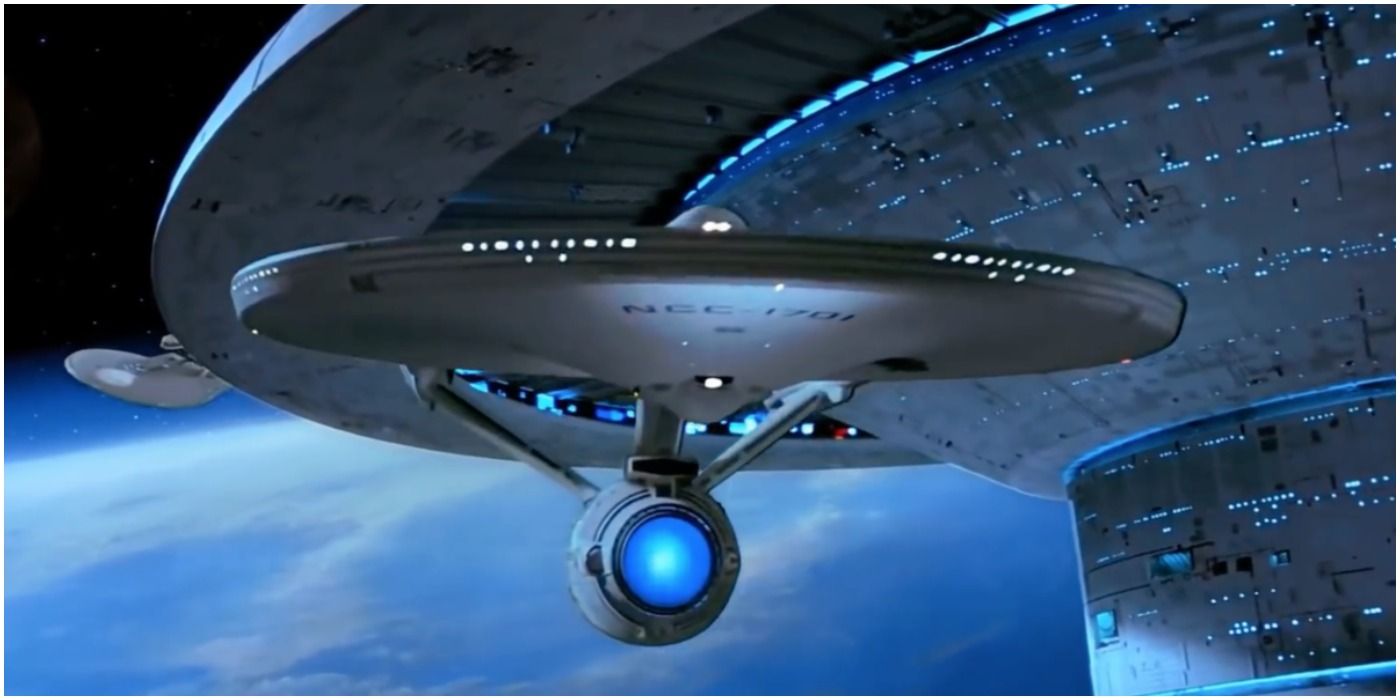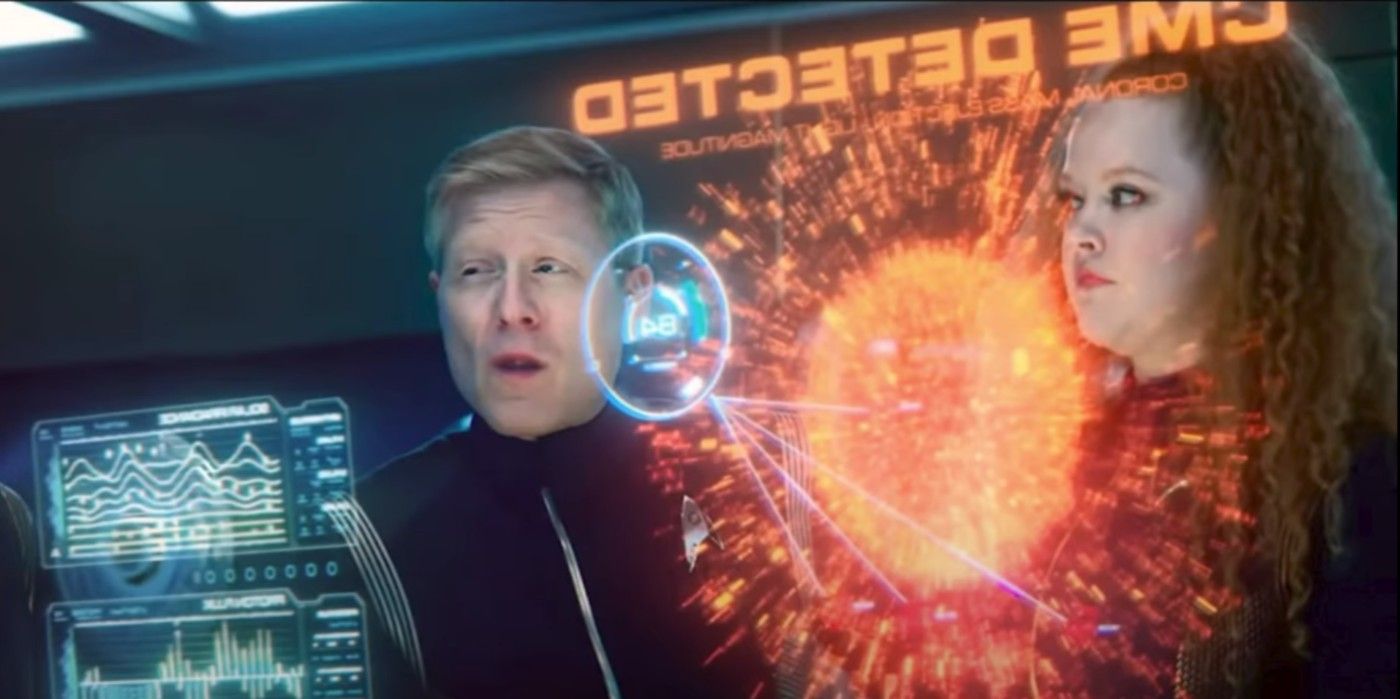Star Trek: Discovery season 3, episode 1 revealed the future of the galaxy has been shaped by a catastrophic event called "The Burn" — but what caused most of the dilithium in the galaxy to spontaneously detonate? A last-ditch time travel mission has taken Michael Burnham to the strangest new world she could have ever envisioned — the 32nd century. There, she has been shocked to learn galactic powers such as the Federation have collapsed due to a mysterious, as-yet-unexplained event called "The Burn."
Sometime between 3068 and 3088, roughly 100-120 years before Burnham arrived in 3188, almost all dilithium in the galaxy spontaneously and simultaneously exploded. Countless starships were destroyed in the catastrophe, and space travel became harder than ever before, because only a small amount of dilithium was left. Worse still, because nobody could explain why the Burn had happened in the first place, it was impossible to guarantee the disaster would not be repeated. The post-Burn galaxy is one of regional powers, with no centralized government and no vast galactic empires.
The Burn is a convenient plot device to transform the galaxy, but of course it's inevitable that Star Trek: Discovery will ultimately reveal just what happened. It's simply too mysterious, and in a sci-fi show like Star Trek: Discovery every mystery exists to be solved. So what could have caused the Burn?
Star Trek's Dilithium Explained
Like the Burn itself, technobabble in Star Trek usually serves the plot. That's the way it should be in any good science-fiction series, because fundamentally these are stories, rather than technical manuals. And yet, for all that's the case, over the decades Star Trek has firmly defined a lot of its tech in order to build a consistent universe and avoid plot holes. Take the example of Star Trek's dilithium crystals, the key to space travel, a rare and naturally-occurring crystal that only exists on a handful of different worlds. Spacefaring societies consider dilithium mines to be some of their most important facilities because the material is used in starship drives to control the matter/antimatter reactions that allow for faster than light travel. There's actually some evidence the word "dilithium" is essentially shorthand to describe a whole range of naturally-occurring substances, which potentially have slightly different properties. In Star Trek: Voyager, Captain Janeway and her crew discovered a new form of dilithium that could actually be used to travel at Warp 10.
Because dilithium is a natural substance, it is best viewed as an unsustainable resource. Consequently, there have been multiple stories in which scientists have worked to find a way to "recrystallize" used dilithium, essentially allowing it to be reused. Po — Queen of the mining planet of Xahia — discovered one such technique in Star Trek: Discovery season 2, and Spock found another way to achieve this using nuclear fission in Star Trek: The Voyage Home. It's reasonable to assume recrystallizing dilithium would become more common as the centuries progressed, simply because it meant vast galactic powers like the Federation were able to depend on a renewable, inexhaustible resource. And this may provide the key to understanding the Burn.
Crystal Harmonics Could Explain The Burn
Dilithium has always been portrayed as unstable, but the spontaneous detonation of almost all dilithium in the galaxy is quite remarkable. Still, by understanding the properties of dilithium it's possible to put forward a basic hypothesis. As we know from the real world, crystals are inherently fragile, and they can actually be shattered when they are subjected to sound at the correct resonant frequency. The vibrational frequency of the crystal synchronizes with the frequency in its environment, and then cracks or shatters in a release of energy. Something similar could have happened in the Burn, and it would have been devastating in a starship because the fracturing of the dilithium would have destabilized the matter/antimatter reactions in warp cores. Some fortunate crews would have been able to dump their warp cores in time, but countless others would have been destroyed in the resulting explosions.
But why would this affect some dilithium, but not all of it? If there are different types of dilithium, then logically they would break under different resonant frequencies. Perhaps even more importantly, recrystallized dilithium may have slightly different properties to original dilithium; not enough to make it useless for spacefaring societies, but enough to make it break at different resonant frequencies. It's not hard to imagine a scenario where most starships were using recrystallized dilithium, and thus were affected by the Burn, but a handful would have picked up some new samples and would have been unaffected. Meanwhile, this would potentially even mean dilithium mines were likewise safe — making the whole thing even more confusing for Starfleet.
In narrative terms, this would be a smart approach for Star Trek: Discovery season 3. There would be a straight narrative line between the idea of recrystallized dilithium, discovered by Po in season 2, and the Burn. That makes it entirely feasible the crew of the Discovery could do what nobody has been able to do in the last century - figure out the cause of the Burn.
Was The Burn A Natural Phenomenon?
Star Trek: Discovery may have already dropped a clue as to the cause of such a resonant frequency, because the trailer showed Discovery's science team looking at a CME event — a Coronal Mass Ejection. There is indeed some evidence such events release low-frequency sound waves, which could potentially have triggered the Burn. But it's important to remember this happened all across the galaxy at once, meaning innumerable stars would have needed to unleash exactly the right vibrations at the exact same time. There's no way this would be natural, so it's more reasonable to assume it was a deliberate act, perhaps an experimental weapon.
But if that is the case, it appears to be an experiment that got out of control. Star Trek: Discovery season 3 is set over a century after the Burn, and it's already clear nobody was positioned to benefit from it. While traders like the Orions are prospering, they are opportunists at heart, taking advantage of the opportunities offered by this new status quo. No new galactic power has emerged from the ashes of the Burn, overwhelming the broken galactic empires and Federations. If the Burn was a weapon, it was one that was still in testing, and it wreaked havoc on a galactic scale — even affecting the race who had commissioned it in the first place. Hopefully it won't be long before Michael Burnham and the crew of Star Trek: Discovery learn the truth.




